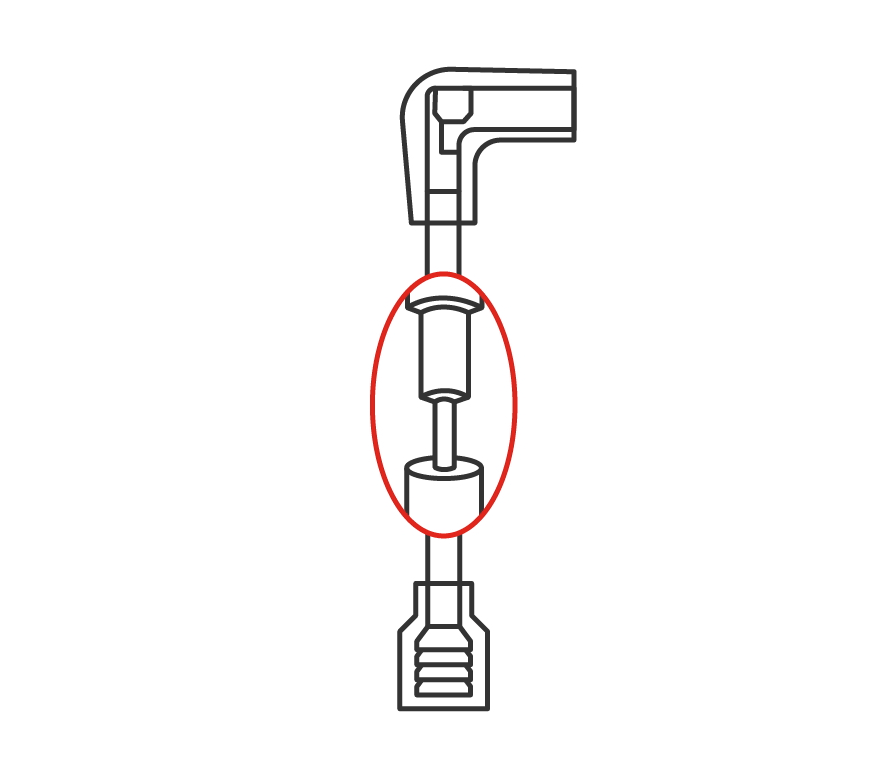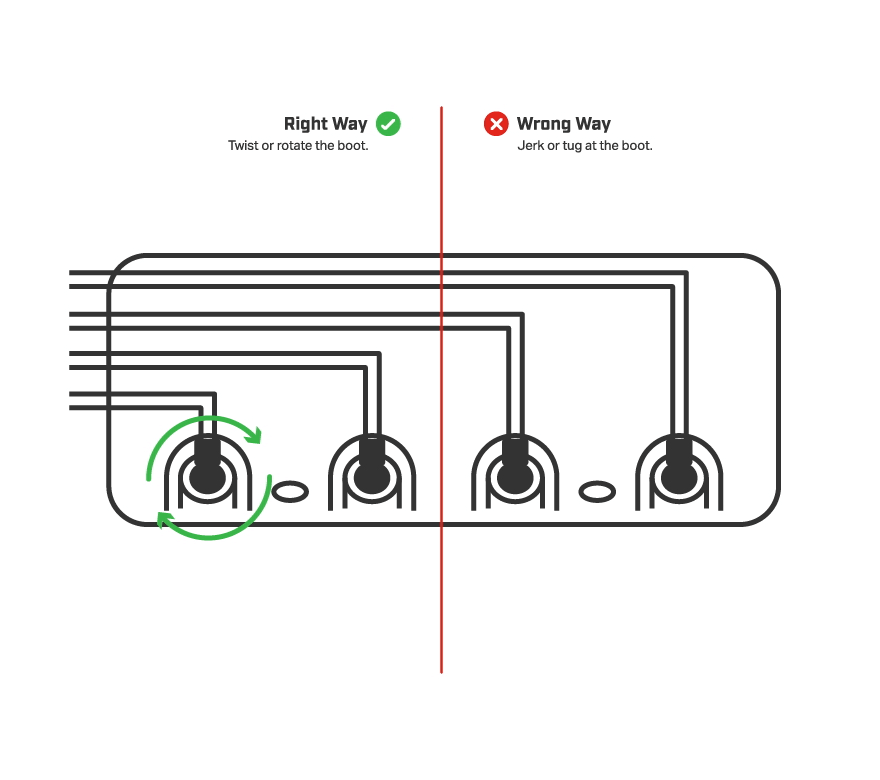Spark plug wires, also known as ignition cables, are a key part of the ignition system. Car engines that have a distributor or remote coil pack have spark plug wires that transfer the spark from the coil to the spark plug.

Step-by-Step Instructions
Changing spark plug wires on a regular basis is essential to keeping a vehicle’s engine at its best.
Removing the Old Spark Plug Wire Set
Remove and replace one wire at a time, starting with the longest wire. By doing them one at a time, you will not have to worry about accidentally switching the wires. When removing wires from the spark plug or distributor cap, twist or rotate the boot to loosen it from the plug. Do not jerk or tug on the wires or you may break the connection. Be sure to only pull on the boot; do not pull on the cable itself.

Installing the New Spark Plug Wire Set
- Match the longest wire in the new set with the longest wire on the vehicle, then match the next longest, and so forth. Do not match for identical length as this varies with different wire manufacturers. What is even more imperative than matching cable length is that you do not mix up the order of the spark plug wires. Improper installation of these wires can result in poor combustion or misfiring of the cylinder, which will cause drivability issues and potentially severe damage to the engine.
- To install a new wire, push the new spark plug wire boot on one end to the module, and then push the next end onto the spark plug. Roll the edge of the boot gently to let out excess air otherwise the boot may not seat properly, causing the wire to dislodge from the cap.
- When installing the spark plug end of the wire, push the wire on the spark plug while holding the end of the boot. Continue gently pushing and twisting. The end should snap on firmly with the boot over the spark plug insulator. Do not force the wire. When correctly aligned, the wire will go on easily and you will hear a “click.” Test by pulling back tightly if the wire comes off easily, it is improperly installed.
Routing the New Spark Plug Wires
When routing spark plug wires to cylinders it’s important to do so in sequence of the firing order to avoid crossfiring. Spacing spark plug wires too close or parallel to each other can also result in crossfiring due to the inductive field which builds up in one wire as the current flows in the other. It’s best to hold spark plug wires in position by using insulated metal, or better yet plastic or fiber brackets to avoid this.
Route the new spark plug wires away from the exhaust manifolds or other metal objects. This protects them from the heat of the manifolds and reduces capacitive voltage loss between the conductor and metal surfaces. Good spark plug terminals are made with a snap ring that give a metallic “click” or “snap” when they are properly set into place. Make sure the terminals are sealed properly and then firmly force any air out of boots and nipples.
Caution
- Make sure your car's engine is cold before you start. Underhood environment can be very warm – only remove the spark plugs wires when the engine is cool to the touch. It can take a few hours for an engine to cool.
- Wipe off the spark plug insulator and distributor cap towers before installing new wires. Route the plug wires exactly as they were originally. To avoid arc-over, do not route wires of consecutively firing cylinders next to each other.
- A couple of things to keep in mind if you have more radio noise upon completion - (1) Metallic wire sets can radiate the ignition noise like an antenna. (2) Always check radio noise with the hood closed and latched. (3) Ensure the spark plug wires aren’t routed parallel to a sensor wire.
- Never clamp spark plug wires tightly or allow them to be pinched between the air cleaner and the distributor. The high voltage stresses will be increased at these points and hasten wire failure.
- Bundling of spark plug wires and wrapping them with tape, pulling them through metal tubes or dressing them tightly against the engine, may make them look neat but can cause serious voltage losses and/or crossfiring. Changing the routing from the original OEM routing can lead to early spark plug wire failure.
Learn more about quality spark plugs, find your car part, or find where to buy your auto part today.
The content contained in this article is for entertainment and informational purposes only and should not be used in lieu of seeking professional advice from a certified technician or mechanic. We encourage you to consult with a certified technician or mechanic if you have specific questions or concerns relating to any of the topics covered herein. Under no circumstances will we be liable for any loss or damage caused by your reliance on any content.
INSTALLATION TIME
- 30 minutes for a four-cylinder engine. However, the time can vary depending on how hard it is to reach the spark plugs wires on your vehicle.
TOOLS NEEDED
Replacement cables
Spark plug wire removal tool (optional)
Insulated metal, plastic or fiber brackets/separators
Related Parts
Champion® offers a wide variety of products for all your automotive needs.
Check them out!